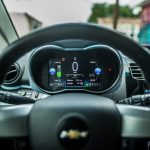In today’s era of smart vehicles and interconnected technologies, automotive cybersecurity plays a pivotal role in ensuring the safety and integrity of connected cars. As the automotive industry continues to embrace digital transformation, securing connected vehicles becomes a paramount concern for manufacturers, drivers, and stakeholders alike.
Securing Connected Vehicles
Encryption and Authentication
Connected vehicles rely on complex communication networks. Implementing robust encryption and authentication measures safeguards these networks from unauthorized access and cyber threats.
Over-the-Air (OTA) Updates
Regular software updates are essential to patch vulnerabilities. The ability to perform OTA updates ensures that vehicles receive the latest security patches promptly.
Firewalls and Network Segmentation
Installing firewalls and employing network segmentation strategies add layers of defense against cyber threats, preventing unauthorized access to critical vehicle systems.
Threats to In-Car Cybersecurity
Hacking Attempts on Vehicle Systems
Hackers may target various vehicle systems, gaining control over critical functions. Understanding potential vulnerabilities helps in implementing preventive measures.
Data Theft Risks
The vast amount of data generated by connected vehicles poses data theft risks. Ensuring secure storage and transmission of data is crucial in mitigating such threats.
Malware and Ransomware Threats
Malicious software can infiltrate vehicle systems, leading to potential ransomware attacks. Antivirus solutions and proactive monitoring are essential countermeasures.
Intrusion Detection Systems for Cars
Role of IDS in Automotive Cybersecurity
Intrusion Detection Systems (IDS) act as vigilant guardians, constantly monitoring vehicle networks for suspicious activities or deviations from normal behavior.
Types of Intrusion Detection Systems
Signature-based and anomaly-based IDS offer different approaches to identifying potential threats, providing a comprehensive defense mechanism.
Real-time Monitoring and Response
Real-time monitoring enables immediate responses to detected threats, minimizing the impact of cybersecurity incidents on vehicle functionality.
Cybersecurity Standards in the Automotive Industry
Overview of Industry Standards
Adhering to established cybersecurity standards ensures a unified and robust approach to safeguarding vehicles across the automotive sector.
Importance of Standardization
Standardization fosters consistency and compatibility, making it easier for manufacturers, suppliers, and service providers to align their cybersecurity efforts.
Compliance and Certification Process
Compliance with industry standards and certification processes ensures that vehicles meet the necessary cybersecurity criteria, instilling confidence in consumers.
Integrating Cybersecurity in Vehicle Design
Collaboration between Automakers and Cybersecurity Experts
Collaborative efforts between automakers and cybersecurity experts result in the development of secure-by-design vehicles.
Inclusion of Cybersecurity Features in New Models
As technology evolves, integrating cybersecurity features into new vehicle models becomes a proactive measure to address emerging threats.
Continuous Improvement and Adaptation
A dynamic approach to cybersecurity involves continuous improvement and adaptation to stay ahead of evolving cyber threats and vulnerabilities.
User Awareness and Education
Educating Drivers about Cybersecurity Risks
Raising awareness among drivers about potential cybersecurity risks empowers them to take an active role in protecting their connected vehicles.
Promoting Responsible Connected Vehicle Use
Encouraging responsible use of connected features, such as avoiding risky behavior while driving, contributes to overall cybersecurity.
Importance of Regular Software Updates
Educating users about the importance of regularly updating vehicle software helps in maintaining the latest security patches.
Industry Collaboration for Cybersecurity
Information Sharing and Collaboration Initiatives
Collaborative efforts and information sharing among industry players enhance the collective ability to identify and address emerging threats.
Government and Private Sector Partnerships
Government agencies and private sector collaborations create a robust ecosystem for tackling cybersecurity challenges on a broader scale.
Collective Efforts to Tackle Cyber Threats
A united front against cyber threats involves joint initiatives, research, and resources pooled together to strengthen the automotive industry’s cybersecurity posture.
Future Trends in Automotive Cybersecurity
Advancements in Cybersecurity Technologies
Ongoing advancements in cybersecurity technologies, including artificial intelligence and machine learning, will play a pivotal role in staying ahead of sophisticated cyber threats.
AI and Machine Learning Applications
The integration of AI and machine learning enables predictive analytics, enhancing the ability to identify and respond to cybersecurity threats proactively.
Emerging Threats and Preemptive Measures
Anticipating and preparing for emerging threats allows the automotive industry to implement preemptive measures, minimizing potential cybersecurity risks.
Conclusion
As the automotive industry embraces the digital era, prioritizing cybersecurity is not just a necessity; it’s a responsibility. Safeguarding connected vehicles requires a multi-faceted approach, from robust technological solutions to user education and industry collaboration. By staying vigilant and proactive, the automotive sector can navigate the evolving landscape of cyber threats and ensure a secure future for connected vehicles.
Frequently Asked Questions (FAQs):
Q: How can drivers protect their connected vehicles from cyber threats?
A: Drivers can protect their vehicles by regularly updating software, avoiding risky online behavior, and being aware of potential cybersecurity risks.
Q: Are there specific cybersecurity standards that automakers must adhere to?
A: Yes, there are industry-specific cybersecurity standards that automakers follow to ensure the security of connected vehicles.
Q: What role do intrusion detection systems play in automotive cybersecurity?
A: Intrusion detection systems monitor vehicle networks for suspicious activities, providing real-time alerts and responses to potential cyber threats.
Q: How can the automotive industry stay ahead of emerging cybersecurity threats?
A: Staying ahead involves continuous technological advancements, collaborations, and a proactive approach to identifying and addressing emerging threats.
Q: Is user awareness crucial for automotive cybersecurity?
A: Absolutely. Educating users about cybersecurity risks and promoting responsible connected vehicle use are essential components of a comprehensive cybersecurity strategy.
Last Updated on December 3, 2023 by admin

Mac is an Automotive enthusiast. He owns up to 15 vehicles. He deals with Auto problems and shows his skill to Car owners who are seeking any type of Car help.





